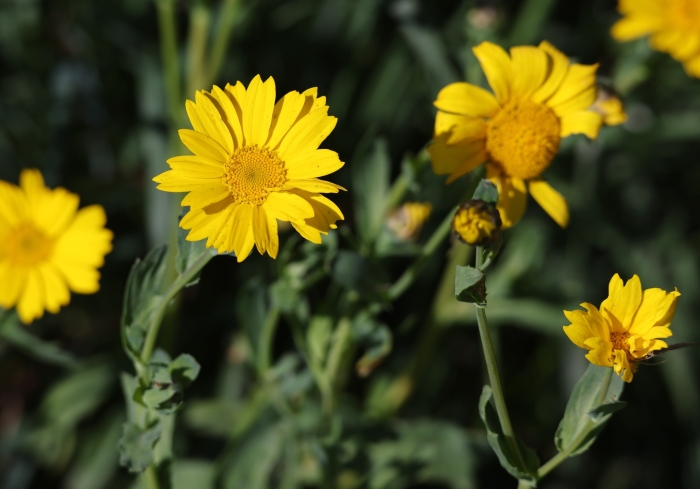Corn Marigold
(Glebionis segetum)
Corn Marigold (Glebionis segetum)
/
/

Jerry Lanfear
CC BY 4.0
Image By:
Jerry Lanfear
Recorded By:
Copyright:
CC BY 4.0
Copyright Notice:
Photo by: Jerry Lanfear | License Type: CC BY 4.0 | License URL: http://creativecommons.org/licenses/by/4.0/ | Rights Holder: Jerry Lanfear | Publisher: iNaturalist | Date Created: 2023-09-04T13:49:31-07:00 |
































Estimated Native Range
Summary
Glebionis segetum, commonly known as corn marigold, is an herbaceous annual plant originally native to the eastern Mediterranean region. It has since naturalized in various parts of Europe, China, and North America. The plant typically grows up to 31 inches tall and features deeply lobed leaves. Its bright yellow flower heads, which consist of both ray and disc florets, bloom from early summer to fall and are quite showy, attracting pollinators and beneficial insects.
Corn marigold is valued for its vibrant yellow flowers that can add a splash of color to wildflower gardens, borders, and as part of pollinator-friendly plantings. It is relatively easy to grow, requiring minimal maintenance once established. The plant prefers full sun but can tolerate partial shade and grows best in well-drained soils. While it is drought-tolerant, moderate watering will encourage more abundant flowering. However, gardeners should be cautious as Glebionis segetum can be potentially invasive outside its native range, spreading through seed dispersal and outcompeting native vegetation. It is important to manage its spread to prevent it from becoming a problem in non-native ecosystems.CC BY-SA 4.0
Corn marigold is valued for its vibrant yellow flowers that can add a splash of color to wildflower gardens, borders, and as part of pollinator-friendly plantings. It is relatively easy to grow, requiring minimal maintenance once established. The plant prefers full sun but can tolerate partial shade and grows best in well-drained soils. While it is drought-tolerant, moderate watering will encourage more abundant flowering. However, gardeners should be cautious as Glebionis segetum can be potentially invasive outside its native range, spreading through seed dispersal and outcompeting native vegetation. It is important to manage its spread to prevent it from becoming a problem in non-native ecosystems.CC BY-SA 4.0
Plant Description
- Plant Type: Herb
- Height: 1-2 feet
- Width: 1-1.5 feet
- Growth Rate: Moderate
- Flower Color: Yellow
- Flowering Season: Spring, Summer
- Leaf Retention:
Growth Requirements
- Sun: Full Sun
- Water: Low
- Drainage: Medium, Fast
Common Uses
Bee Garden, Border Plant, Butterfly Garden, Low Maintenance
Natural Habitat
Originally native to the eastern Mediterranean region
Other Names
Common Names: Corn Daisy, Field Marigold, Corn Chrysanthemum
Scientific Names: , Glebionis segetum, Chamaemelum segetum, Chrysanthemum coronarium var. spatiosum, Chrysanthemum holophyllum, Chrysanthemum laciniatum, Chrysanthemum segetale, Chrysanthemum segetum, Chrysanthemum segetum f. discoideum, Chrysanthemum segetum var. integrifolium
GBIF Accepted Name: